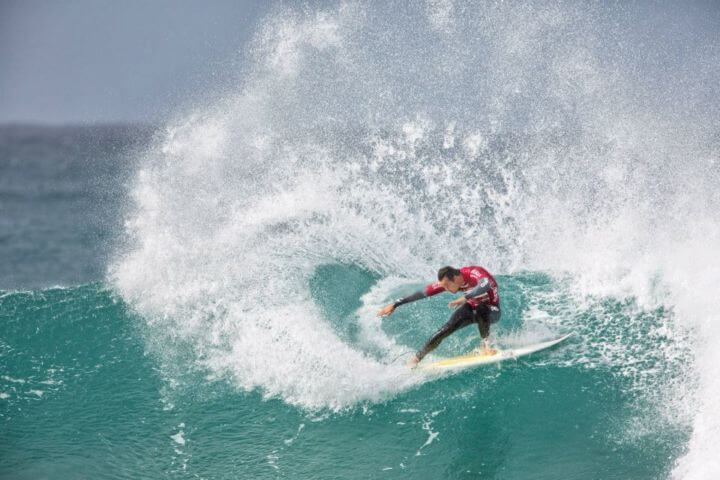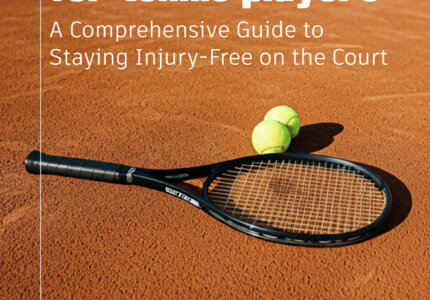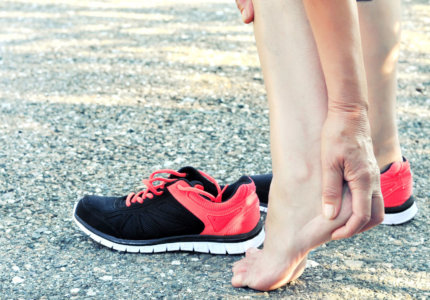Surfing has exploded over the past decade or so with participation rates soaring from ~18 to ~37 million people fuelled by the rise in popularity of the WSL, the introduction of surfing to the Olympic games and the accessibility of surfing to inland areas via wave pool technology. In Australia it is estimated there are ~2.7 million surfers, which isn’t surprising as you see the number of surfers at your local break growing year on year. So with the Rip Curl Pro about to get underway here at Bells Beach, Australia’s most famous break roughly 100km south west of the Melbourne CBD in Victoria; it is the perfect time to explore the types of injuries surfers are likely to encounter, what can be done to mitigate against injury risk and how to improve your performance in the water, while also drawing from our own experience as a surfer.
Surfing Injuries
Surfing injury risk
First thing is first, in terms of safety, surfing is a safe sport. Surfing has an Injury incidence; that is the risk of sustaining a new injury while surfing of .74-1.79 injuries per 1000 hours of surfing. That means for every 1000 hours of time spent surfing there are roughly .74 to 1.79 new injuries that occur. In isolation this doesn’t mean much but if we compare it to other popular sports it becomes clear that surfing is safe; elite men’s soccer 2.44-9.4 per 1000 hours, elite women’s soccer 3.5-19.2 per 1000 hours, professional rugby league 58-211 per 1000 hours, professional Australian Rules Football 9.9 to 65.8 per 1000 hours.
Causes of Acute Surfing Injuries
There are many factors’ surfers need to contend with while out in the water, the energy in the water (anyone who has had a ride over the falls can attest to this), currents/rips, UV, wind and water exposure, the ocean floor (rocks, reef, sand), marine life, your own equipment, other surfers equipment, other people in the water. All of these factors can play a role in why surfers might suffer an acute injury with the most common causes including.
- Being struck by your own board
- Approaching a wave
- Performing a manoeuvre while surfing
- Striking the seafloor/surface

In terms of where these acute surfing injuries are likely to occur the most common injury is to the skin (~46%) in the form of a laceration, cut, abrasion, contusion, bruise etc. Followed by soft tissue (~22.6%) such as sprain/strains, tendon/ligament tears and ruptures, tendinopathy and finally bone injuries (~9.6%) like fractures, dislocations, subluxations, cartilage/meniscus tears.
Most of these acute injuries will occur to the face, head, neck (33.8%), lower limb (33%), upper limb (16.5%), torso (~10%). Knowing that the most common cause of injury is being struck by your own board (blunt object) combined with the face/head/neck being the most common injured location, this would indicate concussion risk could potentially be something to be mindful of when surfing. Italo Eerreria breaking his nose on his own board following an aerial manoeuvre comes straight to mind here.
Causes of Chronic Surfing Injuries
Chronic surfing injuries is defined by the ongoing/prolonged nature (3 or more months) of the injury, with over half of these being attributed to overuse which is unsurprising considering the repetitive nature of paddling. The most common locations for overuse injuries in surfers are the lower back (23.2%), shoulder (22.4%) head/neck/face (17.5%) and knee (12.1%). These injuries are cause by prolonged paddling (21.1%), turning manoeuvres (14.8%) and environmental exposure (5.6%). In terms of the type of injuries that occur joint injuries are the most common (43.5%) followed by muscle (23.6%) and nerve (4.6%).
Why are the lower back, shoulder, head/neck/face and knee so common? The shoulder and knee are fairly logical with prolonged paddling required in surfing, in addition to the pivot and twisting motion the knee undergoes during manoeuvres. The low back appears to potentially be associated with the repetitive twisting motion at the low back during cutting and turning manoeuvres, in addition to the extended amount of time spent in laying down on the board resulting in compression of the joints in the low back. This also ties into why chronic head/neck injuries are so prevalent, being in a prone position on the board forces the neck into prolonged hyperextension, similar to to what cyclists experience.
How to Reduce Your Risk of A Surfing Injury
Due to the random nature of the ocean and the surroundings (ocean floor, fellow surfers/boards) some injury risk mitigation will come down to common sense.
- Surf the waves and conditions to your level of experience and confidence
- Learn how to wipe out correctly (always covering your head with your arms and hands)
- Have the right equipment (board, leash rope, wetsuit/rashie, sun-protection, booties/reef shoes, good wax)
- If a peak is crowded, look for an alternative peak, create some space between you and other surfers, or pick off the less crowded waves
Surfing Load Management
Training load management is extremely important in mitigating the risk of a surfing injury and as discussed earlier overuse injuries are prevalent in surfing. Back in 2015 an acute:chronic workload ratio was proposed which in short suggests if the current (acute) weeks training load exceeds the prior 4 weeks of chronic training load (week in week out training load) by 1.5 times or greater, the risk of injury greatly increases. For surfers this means keeping consistency with your surfing and land-based training. Swinging from say 2 sessions in the water per week at 60-90 minutes week in week out, to no surfing for 3-4 weeks then straight back to those 2 sessions per week, or a couple of big 3-4-hour sessions back to back without building up to that load level is likely to result in a subsequent injury. Keep your week to week load consistent and build up slowly (10% per week) if you are returning from a break, injury or if you are looking to increase your training volume. You can find more information on how the Shannon Clinic – Melbourne Chiropractic and Sports Care monitors training loads here.
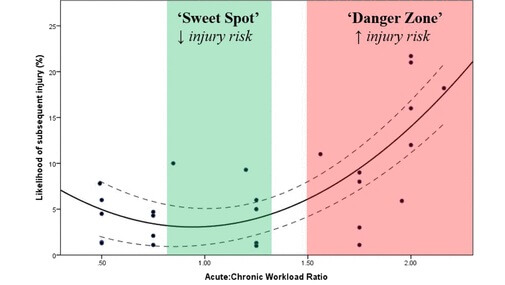
Surfing Strength and Conditioning
Being a sport of balance, power, flexibility, reflex and agility, land and water based strength and conditioning training are extremely important areas to help improve performance and mitigate the risk of a surfing injury; it is also an area surfers traditionally neglect. Knowing that 45-50% of the time is spent paddling, in addition to the shoulder being a prevalent injury site, building shoulder and back strength is one key area to focus on. Furthermore, one small study showed pull-up strenth was associated with improved sprint paddling performance over 5-10m. As a sports chiropractor and surfer the types of exercises we like to help build shoulder and upper back strength for surf paddling include:
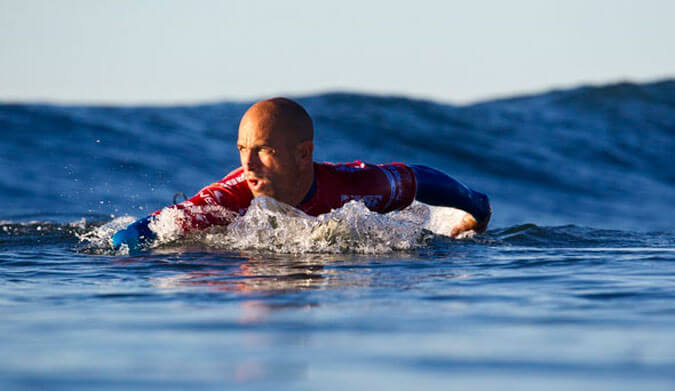
- Pull ups
- Dips
- Reverse cable flys
- Cable/dumbbell flys
- Kneeling cable pulls
- Dumbbell/kettlebell pull overs
- Cable rope pulls
- Bent over cable pulls
- Bosu dome push ups
- Freestyle swimming
- Prone board paddling
Flexibility is another area that can help mitigate the risk of shoulder and back injuries with evidence to suggest surfers have reduced shoulder, back and hamstring flexibility. When you consider paddling primarily involves internal shoulder rotation with limited external shoulder rotation and the low back is in hyper-extension for extends periods, it is not difficult to see how muscle imbalances develop which can lead to subsequent injuries. Therefore it is important to Incorporate a stretching program that targets your shoulders, upper back, lower back, pelvis, hips and legs.
Additional areas surfer want to work on, especially on land to improve performance in the water are, leg strength and plyometrics to help with dynamic and snappy manoeuvres like cutting and turning. Balance with twisting movements to replicate movements on the board, this can be done on a swiss ball, bosu dome, surfskate etc. Finally, cardiovascular training as surfing involves a mix of aerobic and anaerobic exercise due to the explosive nature of catching a wave or paddling through the break, coupled with the low intensity paddling around the line up. Therefore, training a mix of high intensity work outs on land preferably performing upper body cardio training such as an arm crank or swimming with low intensity continuous exercise will help improve aerobic and anaerobic fitness.
Wrapping it All Up
Surfing is a safe, fun sport that anyone at any age can pick up. As the literature has shown the more common acute injuries in surfing are driven by the random nature of the ocean coupled with the energy in the water. Mitigating the risk against an acute surfing injury best comes in the form of being sensible and aware of your own experience and confidence. While injury risk mitigation from chronic surfing injuries comes in the form of load management, as well as through strength and condition. Working on improving technique through surf coaching is also a great way to improve performance and iron out those bad happens.
With a high physical load both in acute and chronic terms it is essential to manage your body to keep it in optimal condition for surfing, this should include good nutritional support, 7-9 hours sleep a night and treatment modalities like chiropractic care, physiotherapy and massage. If you are struggling with a surfing related injury or are looking for further strength and conditioning advice to improve your performance in the water the Melbourne city chiropractor Dr. Shannon at Shannon Clinic Melbourne Chiropractic and Sports Care Clinic is well placed to help. Get out there, be safe and have fun shredding!
